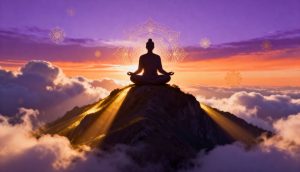Dhanurasana, also known as the bow pose, is a back-bending asana that combines strength, flexibility, and energetic opening.
This pose activates multiple muscle groups, improving spinal mobility, strengthening the back, and opening the chest and shoulders.
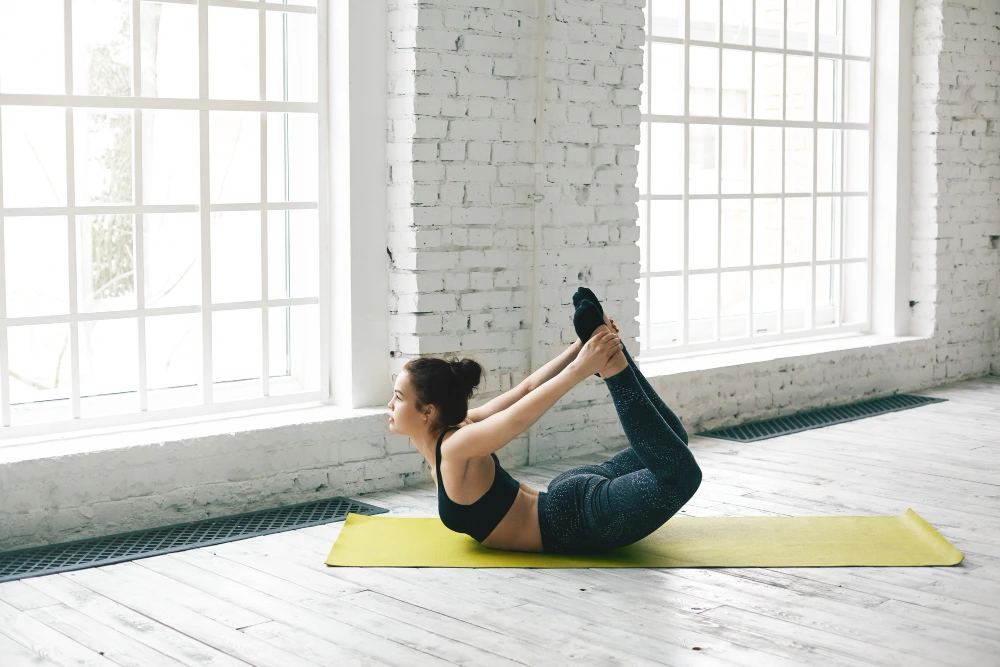
Meaning of Dhanurasana
The name Dhanurasana comes from Sanskrit, where Dhanur means bow and Asana means posture. Its form reflects that of a taut bow, with the body as the curved structure and the arms acting as the string that stretches it.
This symbolism represents strength, focus, and direction, essential qualities in both yoga practice and daily life.
In the yogic tradition, this pose is associated with the activation of inner energy and the expansion of the chest and heart. It is believed that by practicing Dhanurasana, determination, will, and vitality are awakened, helping to overcome physical and emotional blockages.
If you're interested in Yoga Nidra, you can check out our Yoga Nidra course.
It is an asana that invites openness and growth, like a bow ready to launch its arrow with precision and purpose. Take a look at the rest of the yoga postures.
If you are looking to delve deeper into the meaning of other symbolic postures, we recommend exploring our article on the meaning of Astavakrasana.
Variantes de Dhanurasana
Adaptability is one of the cornerstones of yoga, and Dhanurasana is no exception. Here are some variations that allow practitioners of all levels to enjoy the benefits of the bow pose:
Supported Dhanurasana
For those who are still developing spinal flexibility, the pose can be performed with a cushion or pillow under the abdomen. This provides extra support and allows for a more gentle stretch.
One-Legged Dhanurasana
Those who wish to focus the stretch on one side of the body at a time can choose to stretch and lift only one leg and one arm simultaneously.
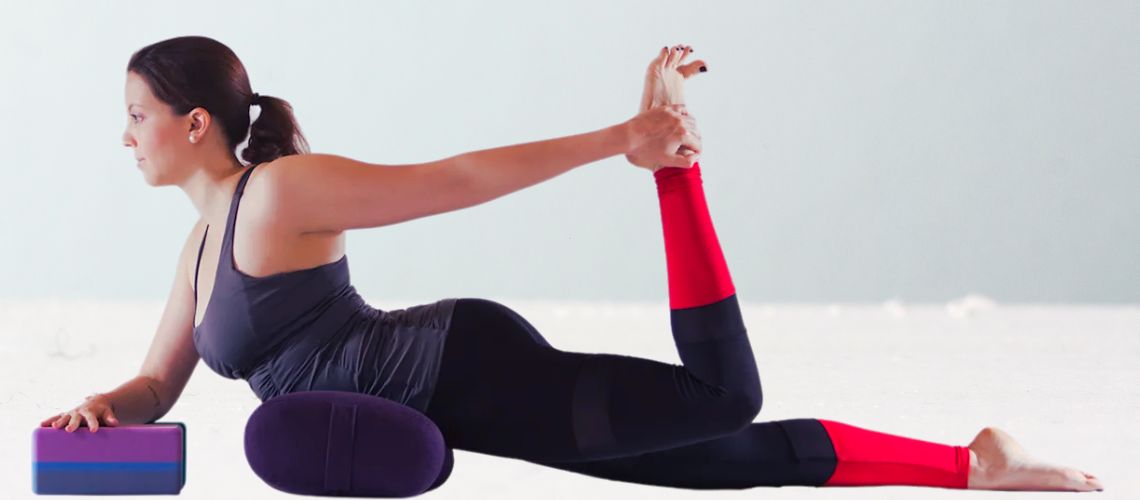
Dhanurasana with Straps
If reaching the ankles is a challenge, the use of straps or yoga belts can be of great help. By wrapping a strap around the ankle, the reach of the arms is extended, facilitating the adoption of the posture.
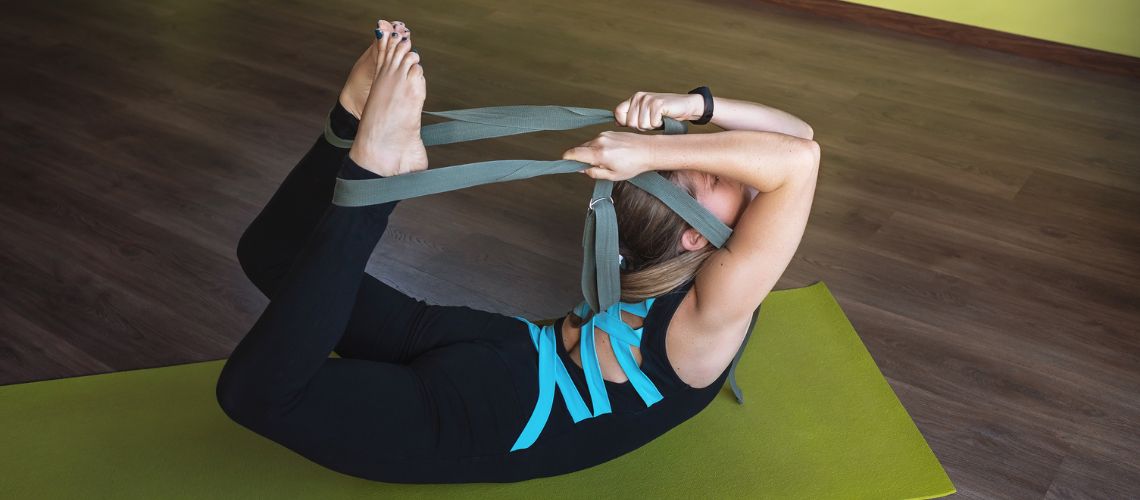
Benefits of Dhanurasana
The bow pose, known as Dhanurasana, is a true jewel within yoga that provides multiple benefits, impacting both the body and the mind.
In the physical aspect, this pose promotes a deep stretch of the spine, which helps to release accumulated tension and improve posture. In addition, by practicing Dhanurasana, intense work is done on the muscles of the abdomen, back, legs, and arms, promoting a notable muscle strengthening.
It also has a positive effect on the digestive system, since the abdominal pressure it generates can stimulate the internal organs and promote digestion, even helping to relieve problems such as constipation.
On the mental and emotional plane, this posture is an ally against stress. By focusing on breathing and maintaining the posture, a feeling of calm and relaxation is generated, significantly reducing levels of emotional tension.
It also requires a total concentration, which helps to strengthen the mind and improve the ability to pay attention. Finally, Dhanurasana contributes to the general rejuvenation of the body, since by stretching and revitalizing it, it infuses a renewing energy and a feeling of freshness.
It’s an asana that reminds us of the importance of balance in our daily lives and provides us with tools to face challenges with grace and determination.
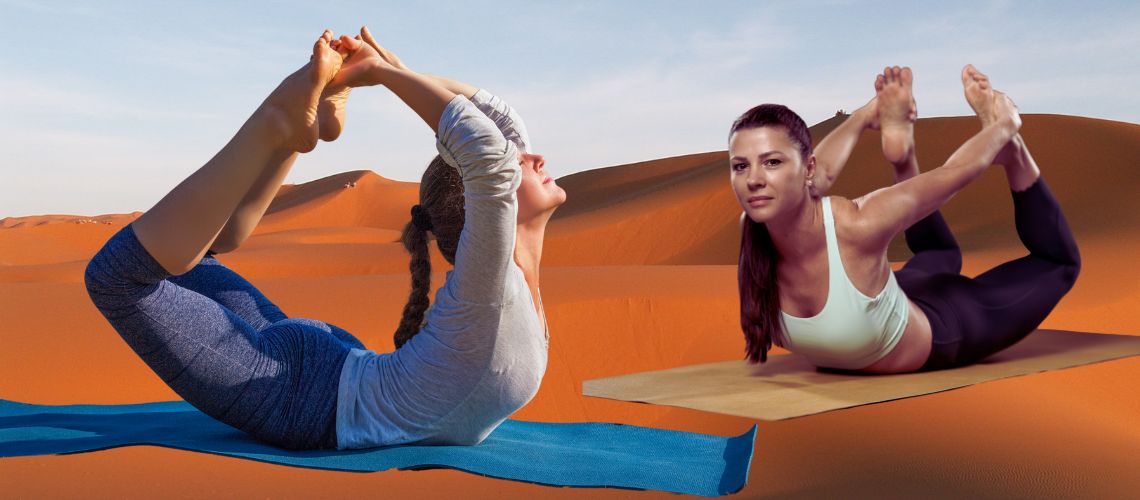
If you are interested in exploring the roots of yoga, you can learn more about the practice of Hatha Yoga, one of the most traditional styles.
Through its regular practice, we can cultivate not only a stronger and more flexible body, but also a more resilient and centered mind. In the vast world of yoga, the bow pose is, without a doubt, a treasure worth exploring and experiencing.
